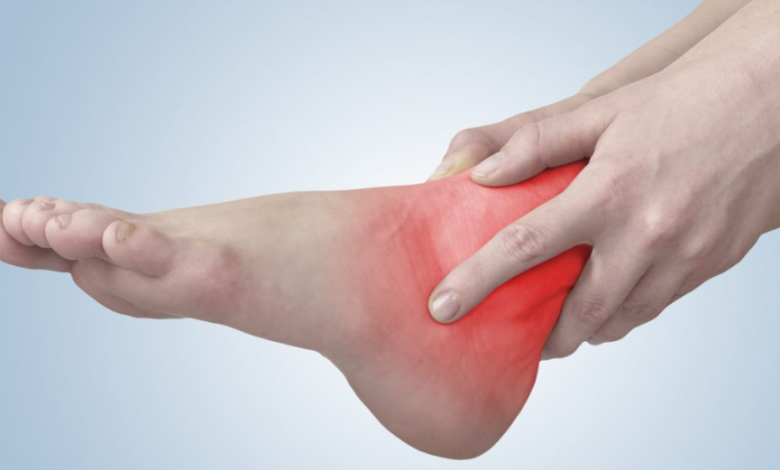Foot and Ankle Specialist Approaches to Recurring Ankle Pain

Recurring ankle pain can be more than just a nuisance—it can interfere with daily activities and keep people from enjoying the things they love. For those dealing with this persistent issue, a foot and ankle specialist offers targeted treatments that address the root causes while focusing on long-term relief. From advanced imaging techniques to personalized care plans, there are many ways specialists tackle chronic ankle problems with precision and care.
Imaging Techniques to Identify Underlying Causes
Understanding the source of recurring ankle pain starts with a detailed and accurate diagnosis, and that’s where imaging techniques come into play. A foot and ankle specialist uses advanced tools like X-rays, MRIs, and ultrasounds to get a clear view of the affected area, ensuring no hidden injuries or abnormalities are overlooked.
X-rays are often the first step, revealing fractures, misalignments, or degenerative changes in the bones. If soft tissues like ligaments or tendons are suspected to be the problem, MRIs and ultrasounds provide a deeper look. These imaging tools can pinpoint issues such as tears, inflammation, or scar tissue that may not be visible during a physical exam. By combining these methods, specialists can uncover the exact cause of pain and design a treatment plan tailored to the individual’s needs.
In some cases, imaging also helps monitor progress throughout treatment. For example, follow-up scans can show whether inflammation has reduced or if any structural changes have occurred. This approach ensures that treatments are effective and that adjustments can be made when necessary, giving patients confidence in their path to recovery.
Customized Braces for Added Joint Support
When recurring ankle pain stems from instability or previous injuries, customized braces can be a game-changer. Foot and ankle specialists often recommend braces to provide added support, reduce strain, and protect the ankle during healing or daily activities.
Unlike generic over-the-counter options, customized braces are designed to fit the unique shape and needs of the patient’s ankle. These devices offer targeted support to areas that need it most, helping to stabilize the joint and prevent further injuries. They’re particularly beneficial for those recovering from sprains, as they limit unnecessary movement while allowing enough flexibility to maintain mobility.
Custom braces can also be used as part of a long-term strategy for managing chronic conditions like arthritis or tendonitis. By redistributing pressure and providing consistent alignment, they can reduce pain and improve overall function. A foot and ankle specialist works closely with patients to ensure the brace fits comfortably and meets their specific lifestyle demands, making it easier to stay active without fear of re-injury.
Strengthening Exercises for Ankle Stability
Weak muscles and imbalanced strength are common culprits behind recurring ankle pain. To address this, foot and ankle specialists often incorporate strengthening exercises into treatment plans, aiming to restore stability and improve overall joint health. These exercises aren’t just about recovery—they’re also key to preventing future injuries.
One of the primary goals of strengthening exercises is to target the muscles surrounding the ankle, including the calf, shin, and foot. Exercises like resistance band stretches, toe raises, and balance drills help rebuild strength and coordination. For patients with more severe instability, a specialist may introduce advanced exercises that challenge the joint while promoting resilience.
Beyond targeting the ankle itself, these exercises also focus on improving the body’s overall alignment and movement patterns. Weak hips, for instance, can contribute to ankle instability, so strengthening the lower body holistically helps create a foundation for lasting relief. Specialists guide patients through these exercises to ensure proper form and progression, allowing them to regain confidence in their movements.
Non-invasive Procedures for Managing Chronic Discomfort
For patients seeking relief from recurring ankle pain without undergoing surgery, non-invasive procedures can offer significant results. These treatments focus on reducing inflammation, promoting healing, and managing discomfort, providing an effective option for those with chronic conditions or lingering injuries.
Therapies like ultrasound-guided injections, physical therapy modalities, and shockwave treatments are commonly used by foot and ankle specialists. For example, cortisone injections can target inflammation directly, offering relief from conditions like arthritis or tendonitis. Shockwave therapy, on the other hand, stimulates blood flow and accelerates tissue repair, making it a great option for persistent pain caused by overuse or repetitive stress injuries.
These non-invasive options often work best when paired with a comprehensive treatment plan that includes strengthening exercises and lifestyle adjustments. Specialists tailor these procedures to the patient’s specific needs, ensuring minimal downtime and maximum effectiveness. For many, these treatments provide a path to recovery that feels manageable and empowering.
Lifestyle Adjustments to Prevent Repeated Injuries
Recurring ankle pain often requires more than just treatment—it calls for a reevaluation of daily habits and activities. Lifestyle adjustments recommended by foot and ankle specialists can make a significant difference in both preventing and managing pain over the long term.
One common adjustment is wearing proper footwear. Shoes with adequate support and cushioning can reduce strain on the ankles, especially for those who spend long hours on their feet or participate in high-impact activities. Specialists may also advise against certain movements or activities that put unnecessary stress on the joint, offering alternatives that align with the patient’s lifestyle.
Read Also: Best Commercial Glass Company in Madison AL




